How to Spot a Penalized or Spammy Domain (My 5-Step Ahrefs Checklist)

In domain investing, the money you save is just as important as the money you make. The only thing worse than missing a great domain is buying a terrible one.
A toxic, penalized domain is a digital landmine that will consume your time and money with zero return.
While some guides offer generic advice, I’m going to share my personal, 5-step checklist for doing a spammy domain check.
We’ll use Ahrefs and real-world examples from my own audits to show you exactly what a penalized domain looks like so you can avoid a costly mistake.
This is a critical skill in the business of domain flipping, and mastering it will save you thousands.
Algorithmic vs. Manual: The Two Types of Google Penalties
Before we dive in, it’s important to understand the two ways Google can penalize a site.
- Algorithmic Penalty: This is an automated penalty. Google’s algorithm (like the Penguin update) detects a pattern of spam (like an unnatural backlink profile) and automatically devalues the site. There is no warning in your dashboard. This is what we’re primarily looking for.
- Manual Action: This is when a human reviewer at Google has manually determined your site violates their guidelines. This is less common for expired domains but is the kiss of death if you find it.
This 5-step checklist is designed to help you identify the “ghosts” of both types of penalties. If you’re new to these concepts, I recommend keeping my SEO & domaining glossary open.
My 5-Step Checklist for Spotting a Toxic Domain
Here is the exact framework I use for every potential domain purchase.
Step 1: Check Google Search Console for Manual Actions
This is the first and most definitive check. A Google Search Console penalty is a non-negotiable “DO NOT BUY” signal.
- How to do it: The moment you get access to a domain you’ve purchased (or if you can get the seller to add you), you must add it as a property in Google Search Console.
- What to look for: In the left-hand menu, navigate to “Security & Manual Actions” and click “Manual actions.”
- The Verdict: If you see a green checkmark and “No issues detected,” you are clear of any manual penalties. If you see anything else, run away.
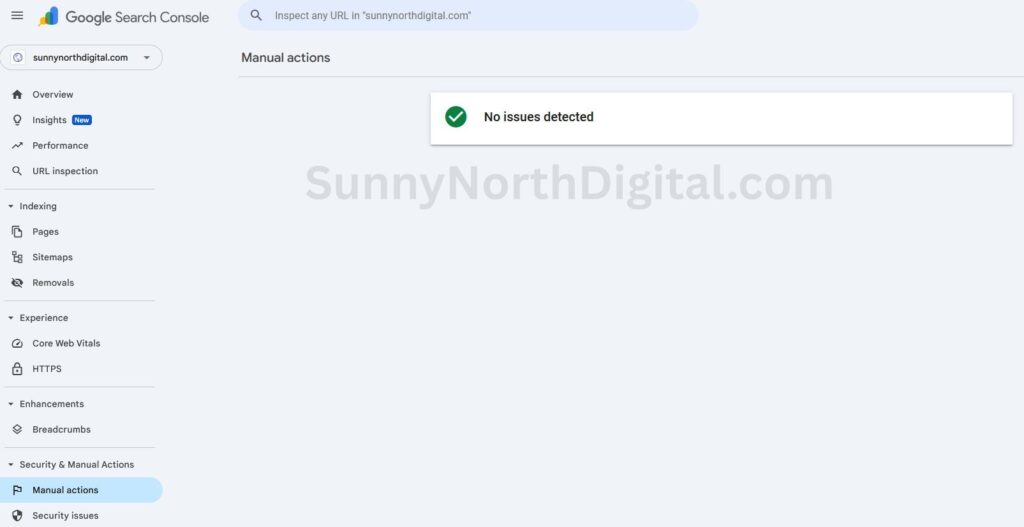
Step 2: Check the Traffic Graph for “Cliffs” and “Flatlines”
This is the most powerful “at-a-glance” analysis you can do in Ahrefs.
- How to do it: Plug your domain into Ahrefs Site Explorer and look at the “Organic traffic” graph. Set the date range to “All-time.”
- What to look for (The Red Flags):
- A “Penalty Cliff”: A sudden, vertical drop in traffic that never recovers. This often aligns with a known Google algorithm update.
- A “Spam Flatline”: This is a more deceptive sign. Look at the
securitygates.comaudit I performed. It showed 59 referring domains, but the traffic graph was a flat, dead line at ZERO for over a decade.
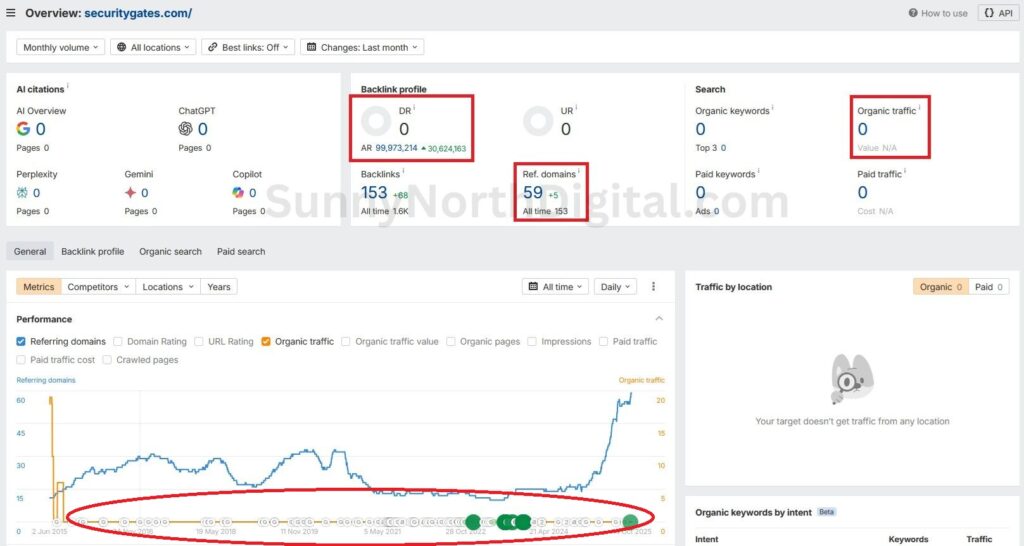
This flatline tells me that despite the links, Google has been ignoring this domain for ten years. This is a clear sign the asset is worthless. You can learn more about this in my full case study on valuing expired domains.
Step 3: Audit the Referring Domains (The “Neighborhood”)
A domain is judged by the company it keeps. A good toxic backlink checker is simply your own brain analyzing the Referring Domains report in Ahrefs.
- How to do it: In Ahrefs, go to the “Referring Domains” report and sort by DR.
- What to look for:
- Green Flags: Links from authoritative, relevant sites (like Wikipedia, universities, or respected industry blogs).
- Red Flags: A high volume of links from low-quality spam sites, “SEO directories,” PBNs, or irrelevant foreign-language sites.
- Real-World Example: In my audit of
germanfoodguide.com, the profile was mixed. It had “blue-chip” links from Wikipedia but was diluted by hundreds of spammy directory links.
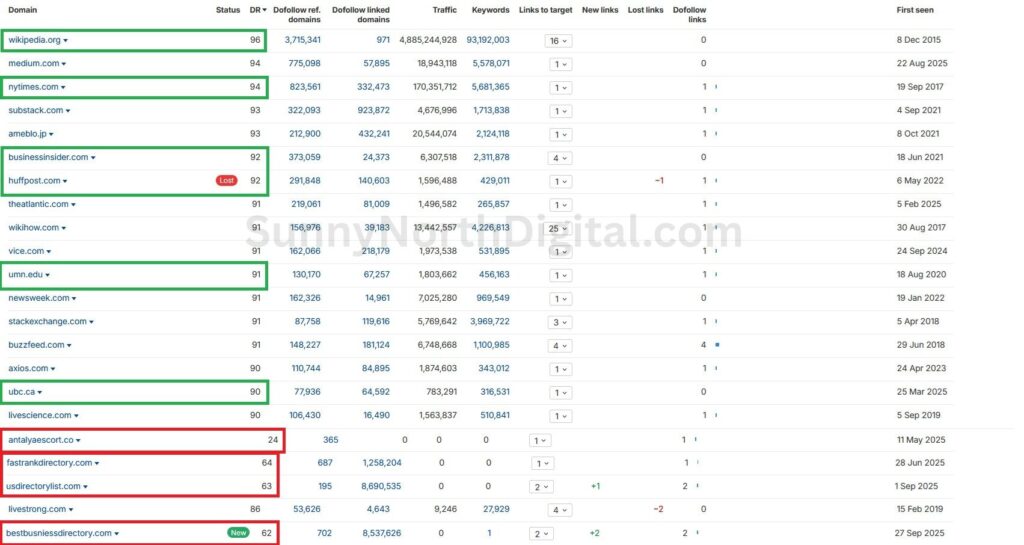
Step 4: Dissect the Anchor Text (The “Smoking Gun”)
The anchor text profile tells you the intent behind the links, and it’s often the smoking gun for a penalty. A healthy profile is dominated by branded anchors, while a toxic profile is full of spam.
- How to do it: In Ahrefs, go to the “Anchors” report.
- What to look for (Green Flags): A high percentage of Branded anchors (like
Sunny North Digital), URL anchors (sunnynorthdigital.com), and natural, generic anchors (click here,this guide). - What to look for (Red Flags): Over-optimization with exact-match keywords or, even worse, explicit spam from irrelevant foreign languages.
For example, when I audited the hacker-pro.net domain, I found a textbook example of a toxic profile. It had two major categories of red flags.
Red Flag #1: Irrelevant Foreign Language Anchors
First, I spotted a high number of generic, non-English anchors. While some Russian is expected for an old Russian forum, these links are clear signs of automated, international spam.
тут(Russian for “here”)
Смотреть(Russian for “Watch”)
buradan videonu yukle(Turkish for “upload your video from here”)
Red Flag #2: Overt Black-Hat SEO Spam
Second, and even worse, I found anchors that were literal advertisements for spammy, black-hat SEO services. This is the definitive “smoking gun.”
Boost https://hacker-pro.net For Ahrefs DR, Moz DA...
Google rank gains for hacker-pro.net: multilingual GP + backlinks...
SERP rise for hacker-pro.net — DR80+, DR/DA/TF...
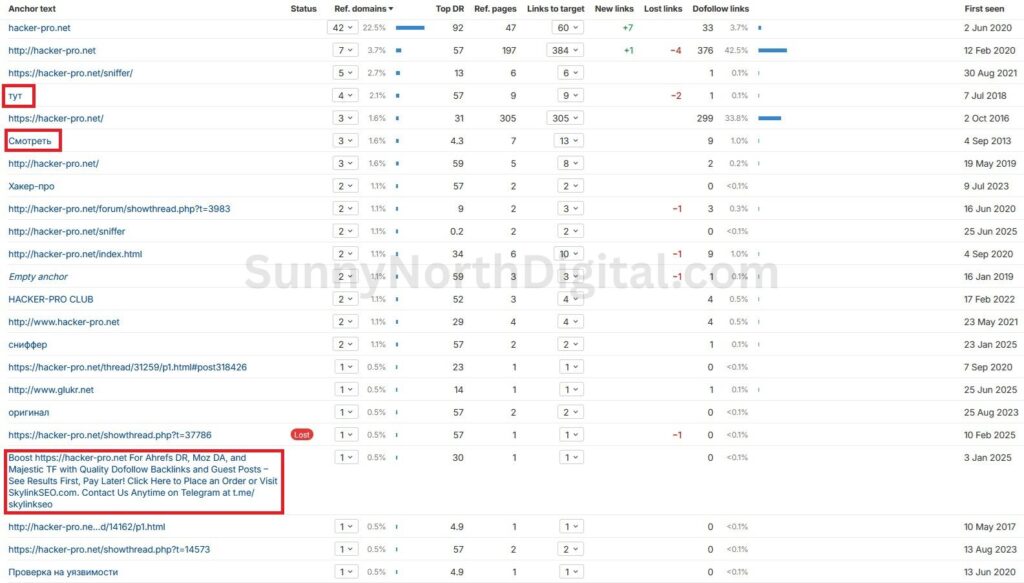
The Verdict: These are not natural links. They are 100% proof that the domain was actively used in spammy link networks. This isn’t a yellow flag; it’s a definitive DO NOT BUY signal.
Step 5: Check the Wayback Machine (The Time Machine)
Finally, what was this site? A clean backlink profile doesn’t matter if the site was previously a casino in a foreign language.
- How to do it: Go to
archive.org(the Wayback Machine) and enter the domain. - What to look for: Click on a few recent snapshots. Does the site’s content look legitimate and on-topic? Or was it a spam blog, a PBN, or something else illicit?
A perfect example is the domain nlsyl.com, which I found at auction. Its Ahrefs Site Explorer profile immediately showed several massive red flags: 196 referring domains, but a Domain Rating of only 3.7 and zero organic traffic.

This data instantly tells me the links are worthless. But why? When I checked the Wayback Machine to see what the site was, I found the final answer:
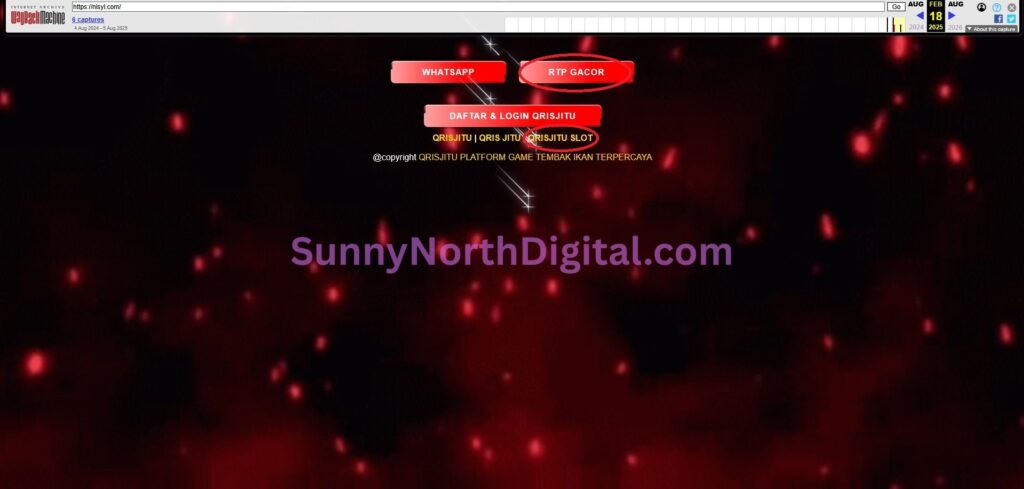
This is a classic “spam” signal. The site was being used as an Indonesian online gambling forum. Buying a domain with a history of spam, in a foreign language, and in a high-risk niche like gambling is a terrible investment. This is an immediate disqualification.
Trust the Data, Not the Hype
It’s easy to get excited by a great domain name. But the data doesn’t lie.
By following this 5-step checklist, you can move beyond guessing and learn to spot the red flags that other investors miss.
A few minutes of analysis can save you thousands of dollars and months of wasted effort.
After you’ve found a clean domain, your next step is to start developing it. For my process on that, check out my guide on how to build your first mini-site.